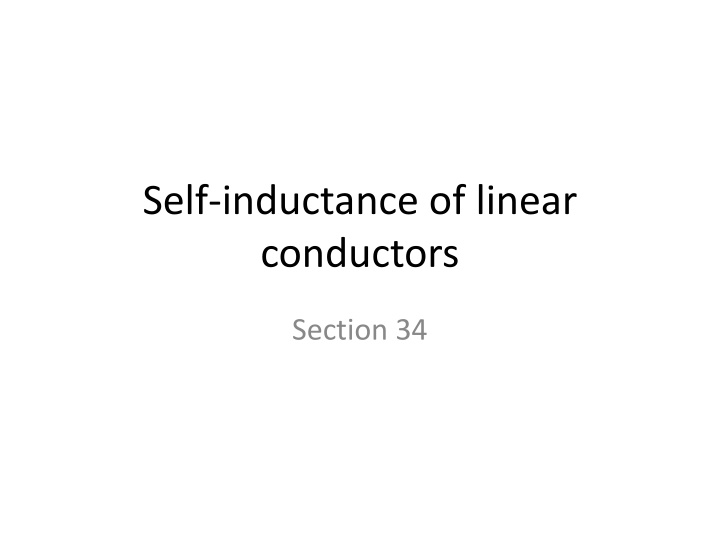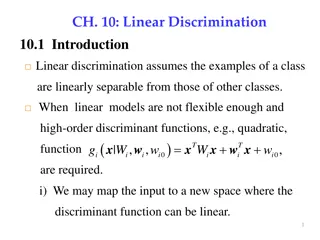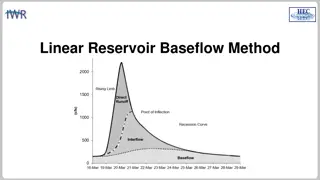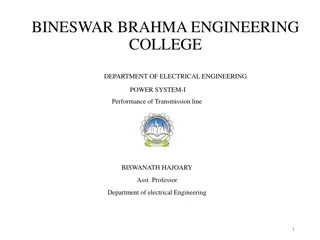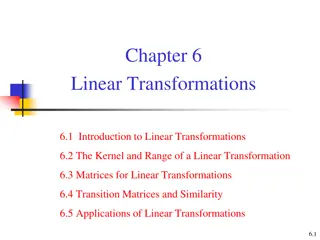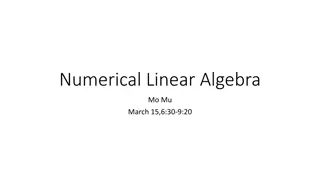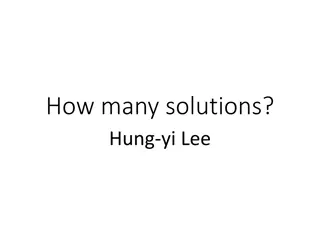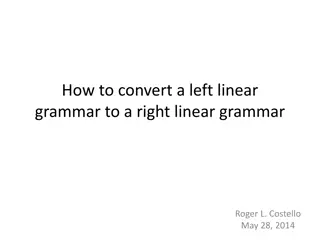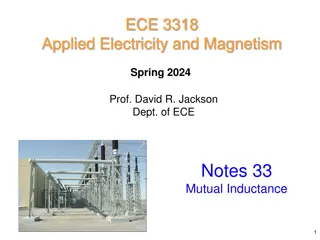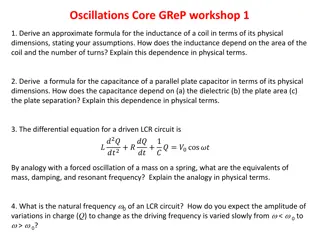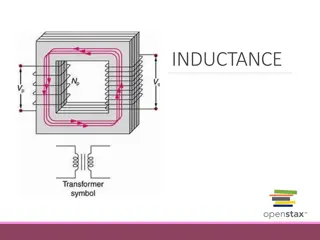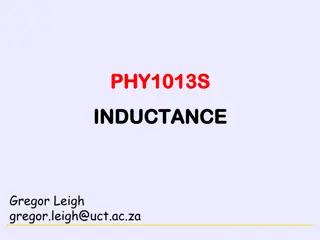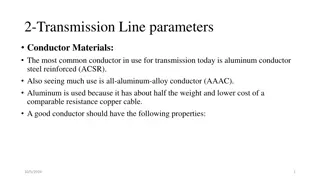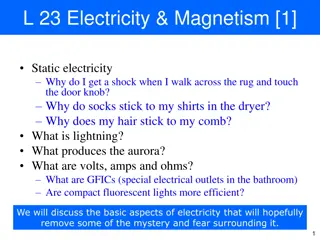Self-Inductance in Linear Conductors
The concept of self-inductance in linear conductors, including the effects of conductor size, current distribution, and the division of self-inductance into internal and external parts. The role of self-inductance in circuits and the calculation of inductance for coils and solenoids are also discussed in depth.
Download Presentation

Please find below an Image/Link to download the presentation.
The content on the website is provided AS IS for your information and personal use only. It may not be sold, licensed, or shared on other websites without obtaining consent from the author.If you encounter any issues during the download, it is possible that the publisher has removed the file from their server.
You are allowed to download the files provided on this website for personal or commercial use, subject to the condition that they are used lawfully. All files are the property of their respective owners.
The content on the website is provided AS IS for your information and personal use only. It may not be sold, licensed, or shared on other websites without obtaining consent from the author.
E N D
Presentation Transcript
Self-inductance of linear conductors Section 34
1. When finding the mutual inductance, we neglected the thickness of the linear conductors. To determine self inductance, we cannot neglect the finite size of the conductor Otherwise diverges as R 0, since both integrals follow the same path
2. For a bulk conductor, self-inductance depends on the current distribution. But at low frequencies, current doesn t vary much over the cross section of a linear conductor.
3. Divide the self inductance into two parts L = Le + Li Internal part. External part. This is the main contribution, since most of the field energy is in the infinite space outside the linear conductor
External part of self inductance Le Infinite straight wire External free energy per unit length Permeability of external medium Self inductance per unit length Compare Diverges as r infinity
But linear currents never extend to infinity. Linear circuits are closed. For r > l, the fields from the two branches tend to cancel, so that H falls off faster than 1/r. and L do not diverge. Use the straight wire result for r<l. Then just ignore all the energy for r>l. gives relative error. For long skinny circuits, l >> a, so >>1, and error is small
Coils of wire are very often found in rf circuits for use as rf chokes. To design such circuits, we must know how to calculate the inductance of coils, which are usually made by hand.
4. Solenoid: wire wound in a helix HW: Same derivation as for (29.16), except with conduction surface current density instead of magnetization surface current density
5. For long solenoid, g = nJ, J = current in the wire, n = turns/unit length H2 = 0 H1 = (uniform) Satisfies and boundary condition, so that s the solution
6. Field energy per unit length of a long solenoid, h>>b neglect end effects. Permeability of magnetic core e J2
If total length of the wire is l Sub one power
For solenoid For single loop of same length = = = Ratio N = total number of rows of wire, usually <1000 While l/a might be >100m/0.0001m = 106.
